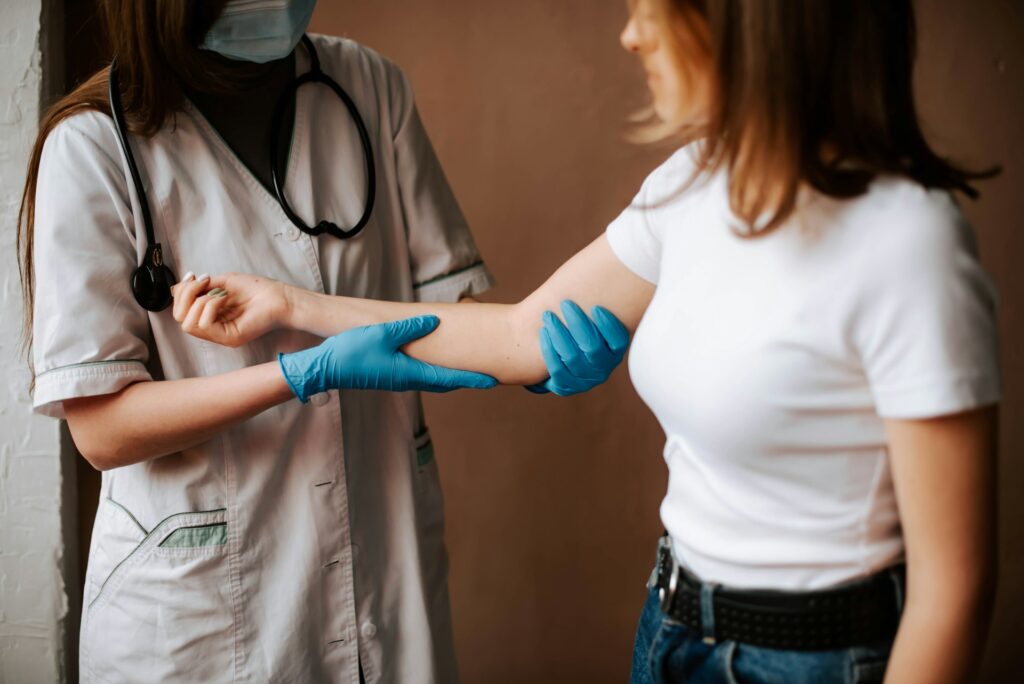Posted by: Skin And Cancer Institute in Skin Cancer

With rising skin cancer rates, early detection is more crucial than ever. There’s a variety of screening methods available, and choosing the one that’s most effective for you is essential. This comprehensive guide will explore the different skin cancer screening options and provide insights to help you make an informed choice that aligns with your health needs.
Understanding Skin Cancer And Its Impact
Skin Cancer 101: A Primer
Skin cancer is the most common form of cancer worldwide. The most prevalent types are basal cell carcinoma (BCC), squamous cell carcinoma (SCC), and melanoma. While BCC and SCC are highly curable if detected early, melanoma is more aggressive and can be fatal.
Risk Factors and the Urgency of Early Detection
Excessive sun exposure, a history of sunburns, fair skin, a weakened immune system, and a family history of skin cancer are significant risk factors. Understanding these risk factors is integral in determining the importance of regular screenings and taking preventive measures.
The Gamut of Skin Cancer Screening Methods
Visual Inspection By A Dermatologist
Regular check-ups with a dermatologist involve a head-to-toe inspection of your skin, focusing on any moles or spots that may be concerning. The naked eye remains a powerful tool when in the hands of a skilled professional.
Skin Self-Examination
In between visits to the doctor, conducting your self-examination can help you keep track of changes in your skin. Tools like mirrors and digital photos can be beneficial in monitoring photographing changes in the size, color, and shape of moles and lesions.
Total Body Photography
Total body photography (TBP) is a specialized imaging technique that captures high-quality full-body images of the skin. This method helps doctors detect new or changing moles and lesions and track any changes over time.
Dermoscopy
Dermoscopy involves using a handheld magnifying device to examine the skin’s surface and detect suspicious changes. This technique is particularly useful for identifying early signs of melanoma.
Confocal Microscopy
A more advanced technique, confocal microscopy, uses a laser to scan the skin at a cellular level, possibly detecting early signs of skin cancer.
Biopsy
When a suspicious lesion is discovered, a biopsy can be performed to confirm or rule out the presence of cancer. Biopsies are of various types, designed to extract tissue samples for microscopic examination to identify cellular abnormalities indicative of cancer.
Personal Considerations When Selecting a Screening Method
Accounting for Personal Risk Factors and Family History
If you have a history of skin cancer or you’re at a higher risk due to genetics or lifestyle, more frequent and thorough screenings may be necessary.
Navigating Cost and Accessibility
The cost of screenings can vary significantly depending on the method and where you seek medical care. For some, accessibility or insurance coverage may dictate feasible screening methods.
Weighing Accuracy and Reliability
Determine the effectiveness of each screening method, and understand that while some are more precise than others, they don’t guarantee detection. Trust the recommendations of healthcare professionals to guide you.
Evaluating Time Commitment
The timescales in which different screening methods are carried out can differ significantly. A self-exam can be done in minutes, while a total body photography session may last much longer.
Comfort Level and Personal Preferences
Medical procedures can be invasive, however minimally. Choose a screening method you feel comfortable with and are more likely to adhere to over time.
Expert Opinions and Guidelines
What Do Dermatology Associations Say?
Leading dermatology associations like the American Academy of Dermatology (AAD) provide guidelines for skin cancer screenings, often recommending visual inspection by a dermatologist and regular self-checks.
Frequency of Screenings: How Often Is Enough?
The frequency of screening recommendations can vary depending on your risk profile and whether you’ve had a skin cancer diagnosis in the past. Generally, seeing a dermatologist annually is advised, but those with a higher risk might need more frequent examinations.
The Path to Preventative Care
Diligence in Screening Can Save Lives
Regardless of your chosen method, the most important step is getting screened. Early detection is the key to successful treatment, and in the context of skin cancer, it literally can mean the difference between life and death.
Take the Next Step: Consult a Dermatologist
Don’t limit your knowledge and resources to online articles and other sources. Schedule an appointment with The Skin and Cancer Institute for personalized screenings and skin health advice.
Advance your understanding and approach to skin cancer screenings, and you’ll empower yourself with potent tools for safeguarding your health. Remember, knowledge is your shield when detecting and preventing skin cancer, and early action is your sword. Take charge of your well-being, and let’s defeat this silent adversary together.